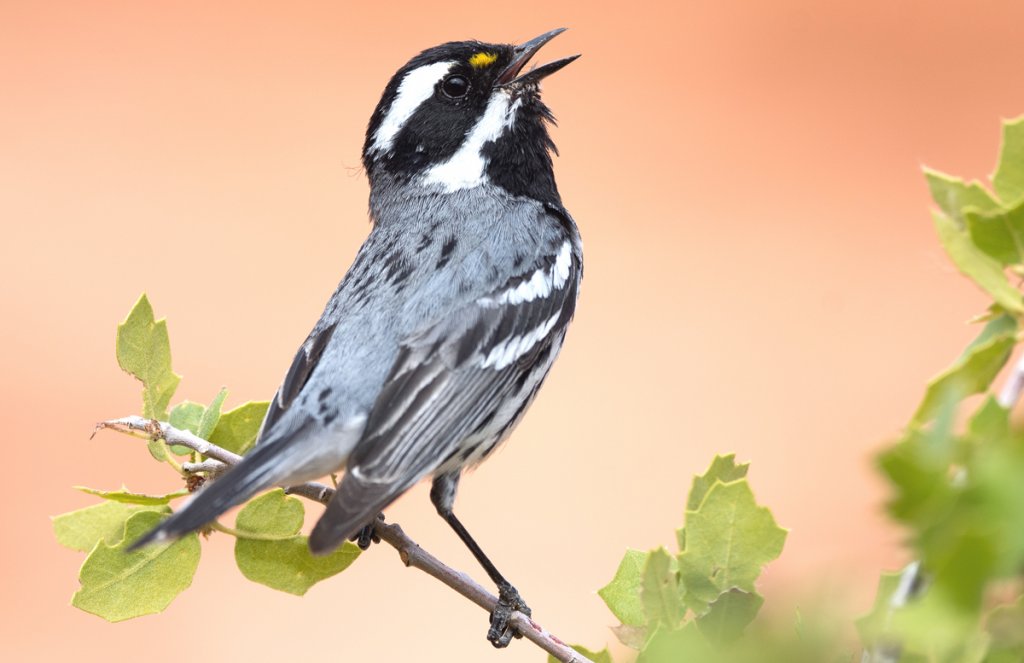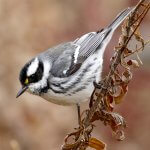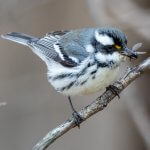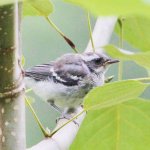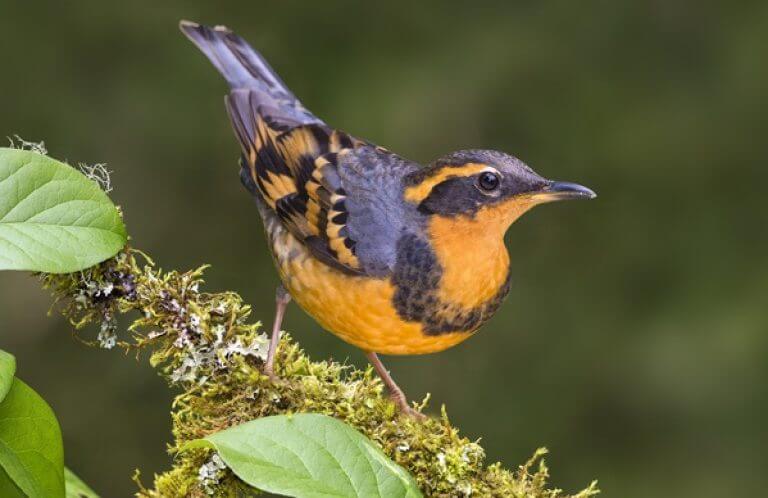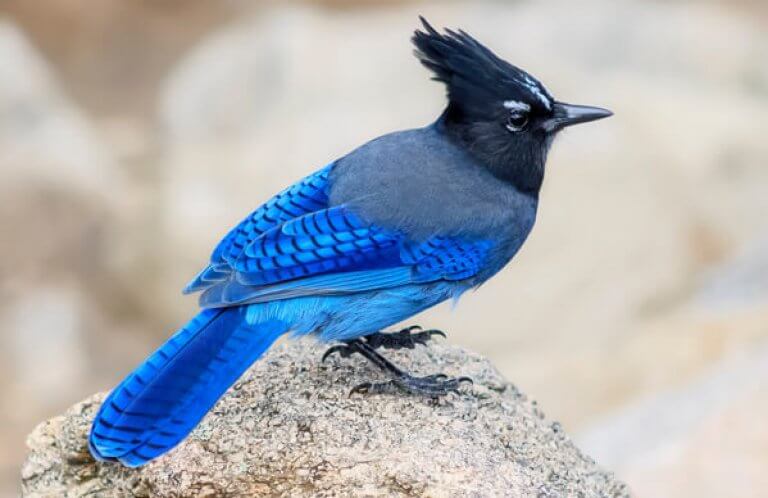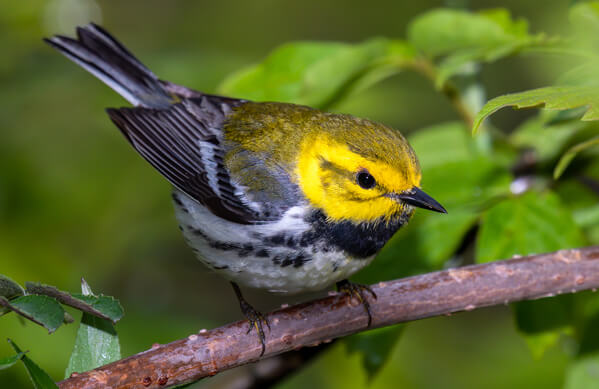About the Black-throated Gray Warbler
The Black-throated Gray Warbler is a distinctive songbird of dry, forested and brushy habitats in the western United States. Its bold black and white head stripes and gray back, streaked with black in adult males, are handy clues to its identification. The adult male also sports a black bib, which at first glance may give this bird the look of a chickadee or a Black-and-white Warbler, an eastern bird with which it rarely occurs. The Black-throated Gray's bright yellow loral spot, a feature not seen in other warblers, clinches its ID.
In a special way, the Black-throated Gray Warbler takes a keen interest in other birds that share its habitats, such as the Ruffed Grouse, Varied Thrush, and Steller's Jay.
Feathering the Nest
Black-throated Gray Warblers line their nest cups with many feathers they come across while perusing their territory. One nest may be lined with hundreds of feathers, from a variety of species living in and near the warbler's habitat, ranging in size from roadrunners to sparrows. Often, the warblers tuck the pointed quills into the adjacent nest wall as they feather their nests.
Songs and Sounds
The Black-throated Gray Warbler's song is distinctive in quality, but rather variable. It usually contains a series of several buzzy, two-syllable notes, often followed by one to three single notes that rise or fall. The buzzy notes are reminiscent in tone to those of Black-throated Green Warbler, a close relative.
Listen to the song here:
Breeding and Feeding
Research Needed
Black-throated Gray Warblers nest in a variety of places, usually in trees including oak, fir, pine, and juniper, sometimes low to the ground but often from just above eye level to 20 or, sometimes, 30 feet up.
For such an often-seen bird, this species remains somewhat of an enigma when it comes to its nesting habits. The female likely builds the nest alone, but is attended by her mate. The structure is a deep cup fashioned of materials including forb stalks, grasses, bark, mosses, and/or rootlets. It is often placed on a horizontal branch or sometimes in the crotch of a small tree. Rarely, a nest is constructed within an epiphytic mistletoe clump attached to a tree branch. As with other warblers and many other songbirds, the female lines the nest cup with soft materials. As mentioned above, feathers are usually a key part of the nest lining, along with fine grasses and some animal hair (including from livestock).
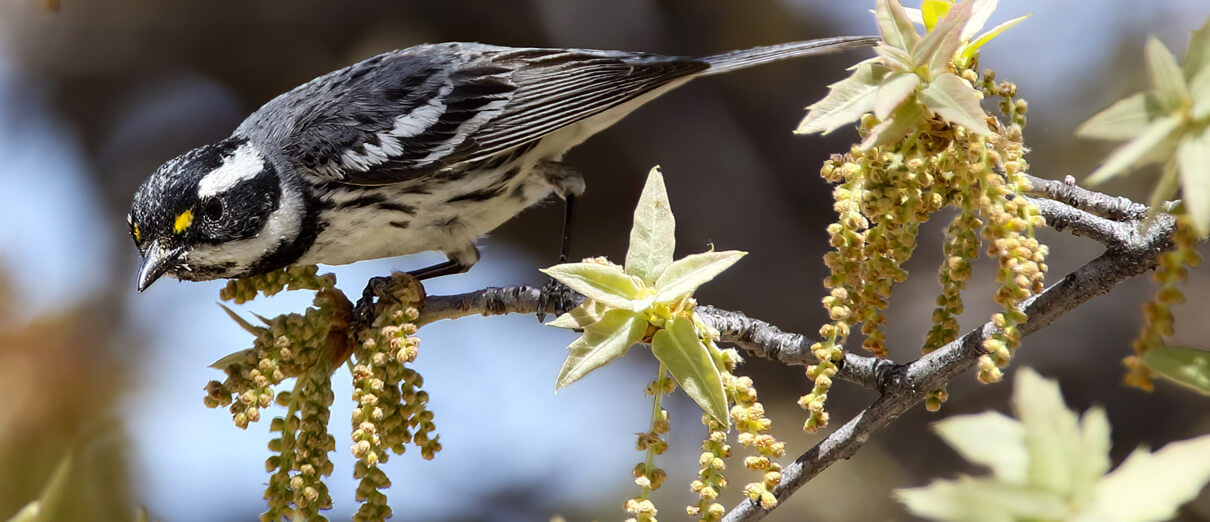
The female lays three to five eggs, which she alone is thought to incubate. Both parents feed the growing young. How long it usually takes for them to fledge remains to be documented, but is probably about two weeks.
Black-throated Gray Warblers energetically forage among branches and foliage of trees and shrubs. Most of the time, they glean insects and larvae from foliage, but they sometimes hover or take quick flights to catch prey. The specifics of this bird's diet also are not well documented. Wintering and migrating birds likely eat some seeds.
Region and Range

Black-throated Gray Warblers are found in open forest and brush. Habitats include: piñon-juniper, brushy oak forest, pine-oak, coniferous, and other open forest, often with thick undergrowth.
This species nests from southern British Columbia, south and east to south-central Colorado and northeastern New Mexico, then south to northwestern Mexico, near the U.S. border. Most of the population winters in Mexico, but a few are found in southern California and South Texas during the cold months. This species also pops up as a rare vagrant in the East, and there are a few records for northern Central America as well.
During migration, the Black-throated Gray Warbler is often found in mixed-species foraging flocks.
Conservation
Concerns for the Future
The conservation consortium Partners in Flight estimates the Black-throated Gray Warbler population to be in moderate decline. The reasons for this drop are not well known, in part because there are few details on the specific habitat needs of this species from region to region.
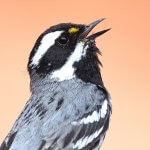
Help support ABC's conservation mission!
The Black-throated Gray Warbler occurs in many remote, semi-arid parts of the U.S., where there is little to no pressure from development or clearing. Several things that likely merit exploration include how climate change might affect this bird, and if changes in breeding success occur when habitats are altered — for example, when trees or brush are removed from pasturelands.
This factsheet from the Bureau of Land Management and U.S. Fish and Wildlife Service discusses how the threat of climate change is already impacting pinyon-juniper ecosystems and species, such as the Black-throated Gray Warbler, that inhabit them.
Get Involved
Policies enacted by the U.S. Congress and federal agencies, such as the U.S. Fish and Wildlife Service, have a huge impact on migratory birds. You can help shape these rules for the better by telling lawmakers to prioritize birds, bird habitat, and bird-friendly measures. To get started, visit ABC's Action Center.
Living a bird-friendly life can have an immediate impact on migratory birds in the United States. Doing so can be as easy as adding native plants to your garden, avoiding pesticides, and keeping cats indoors. To learn more, visit our Bird-Friendly Life page.
American Bird Conservancy and our Migratory Bird Joint Venture partners have improved conservation management on more than 8.5 million acres of U.S. bird habitat — an area larger than the state of Maryland — over the last ten years. That's not all: With the help of international partners, we've established a network of more than 100 areas of priority bird habitat across the Americas, helping to ensure that birds' needs are met during all stages of their lifecycles. These are monumental undertakings, requiring the support of many, and you can help by making a gift today.





































